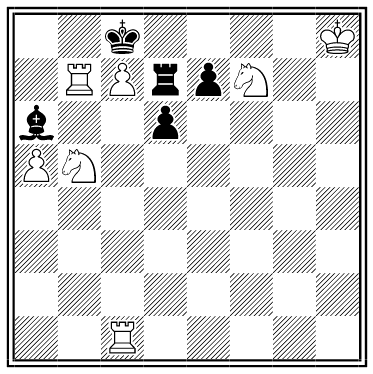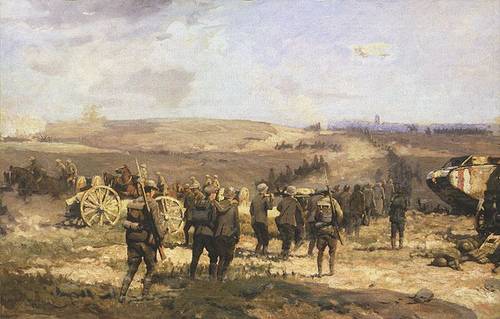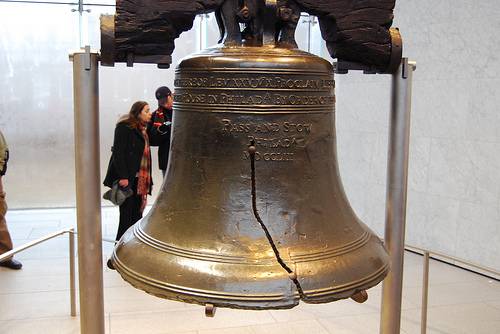
A Christmas puzzle by J.C.J. Wainwright, from the American Chess Bulletin, December 1917.
White to mate in one move.

A Christmas puzzle by J.C.J. Wainwright, from the American Chess Bulletin, December 1917.
White to mate in one move.
Can God make a stone so big that he can’t lift it?
This seems to cast doubt on God’s omnipotence.
But suppose he can create such a stone but simply hasn’t. Does that solve the difficulty?

An Austrian Archduke, assaulted and assailed,
Broke Belgium’s barriers, by Britain bewailed,
Causing consternation, confused chaotic crises;
Diffusing destructive, death-dealing devices.
England engaged earnestly, eager every ear,
France fought furiously, forsaking foolish fear,
Great German garrisons grappled Gallic guard,
Hohenzollern Hussars hammered, heavy, hard.
Infantry, Imperial, Indian, Irish, intermingling,
Jackets jaunty, joking, jesting, jostling, jingling.
Kinetic, Kruppised Kaiser, kingdom’s killing knight,
Laid Louvain lamenting, London lacking light,
Mobilizing millions, marvellous mobility,
Numberless nonentities, numerous nobility.
Oligarchies olden opposed olive offering,
Prussia pressed Paris, Polish protection proffering,
Quaint Quebec quickly quartered quotidian quota,
Renascent Russia, resonant, reported regal rota.
Scotch soldiers, sterling, songs stalwart sung,
“Tipperary” thundered through titanic tongue.
United States urging unarmament, unwanted,
Visualized victory vociferously vaunted,
Wilson’s warnings wasted, world war wild,
Xenian Xanthochroi Xantippically X-iled.
Yorkshire’s young yeomen yelling youthfully,
“Zigzag Zeppelins, Zuyder Zee.”
— John R. Edwards
A woman visits a jewelry store and buys a ring for $100.
The next day she returns and asks to exchange it for another. She picks out one worth $200, thanks the jeweler and turns to go.
“Wait, miss,” he says. “That’s a $200 ring.”
“Yes,” she says. “I paid you $100 yesterday, and I’ve just given you a ring worth $100.”
And she trips lightly out of the store.
Army slang collected in Mrs. Byrne’s Dictionary of Unusual, Obscure, and Preposterous Words:
George Washington said, “An army of asses led by a lion is better than an army of lions led by an ass.”

As it happens, the morning star and the evening star are both Venus–but the solar system might have evolved so that Mercury, for instance, was the brightest star in the morning sky.
Thus the morning star has a property that the evening star does not have: It’s necessarily identical with the morning star.
And if the morning star and the evening star have different properties, then they’re not the same object after all.
Notice, Hartford Courant, May 20, 1875:
TWO HUNDRED & FIVE DOLLARS REWARD–At the great base ball match on Tuesday, while I was engaged in hurrahing, a small boy walked off with an English-made brown silk UMBRELLA belonging to me, and forgot to bring it back. I will pay $5 for the return of that umbrella in good condition to my house on Farmington avenue. I do not want the boy (in an active state) but will pay two hundred dollars for his remains.
Samuel L. Clemens
Can you move an object using only your mind? Of course not. But can you move one in the past?
Since January 1997, the Retropsychokinesis Project at the University of Kent has invited Web visitors to try to influence the replay of a prerecorded bitstream. In other words, they must try to influence an event that has already happened.
The experimenters claim to be agnostic as to whether retroactive causality exists, but “the best existing database suggests that the odds are in the order of 1 in 630 thousand million that the experimental evidence is the result of chance.”
Try it for yourself here — but remember, if you have some skepticism about this, it may only be because someone in the future is influencing you.

In 1972, the Procrastinators Club of America sent a letter to the Whitechapel Bell Foundry in London, complaining that the Liberty Bell was cracked.
After an interval, the foundry responded:
“We would be happy to provide a replacement bell. Kindly return the damaged bell to us in its original packaging.”
The very worst case of delerium tremens on record is one told of by the Bonham (Texas) Enterprise, which says that a few days ago a man residing five or six miles from that place ‘saw something resembling an enormous serpent floating in a cloud that was passing over his farm. Several parties of men and boys, at work in the fields, observed the same thing, and were seriously frightened. It seemed to be as large and long as a telegraph-pole, was of a yellow striped color, and seemed to float along without any effort. They could see it coil itself up, turn over, and thrust forward its huge head as if striking at something.’
— New York Times, July 8, 1873